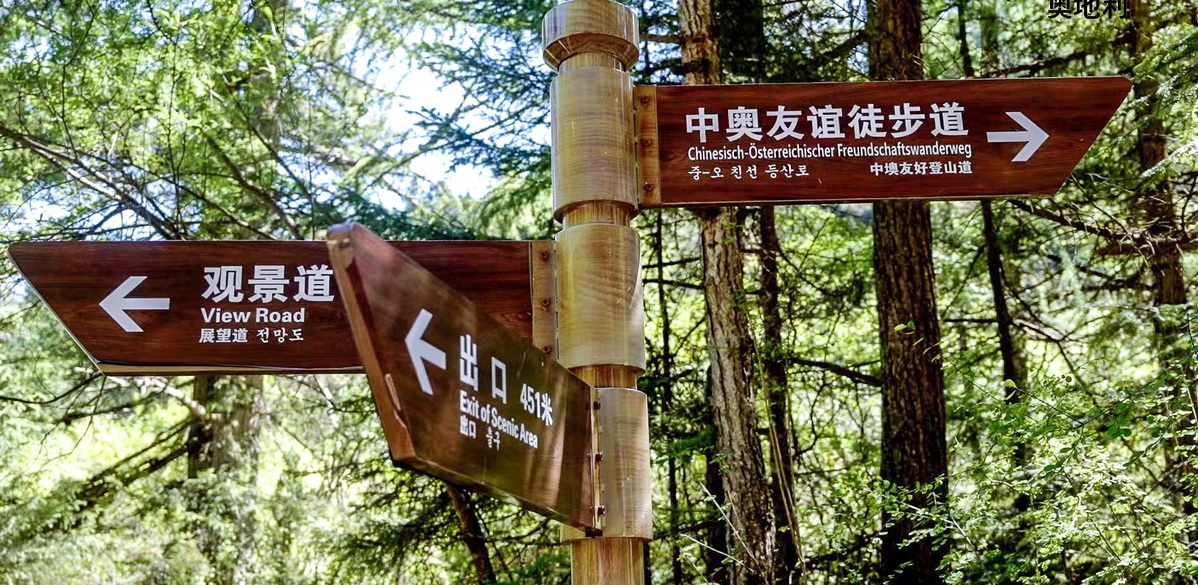Scenic Austria seeking Chinese visitors
By Wang Mingjie in London | China Daily Global | Updated: 2024-09-30 03:35

As Chinese travelers increasingly seek nature-based experiences and outdoor adventures, European destinations like Austria are responding with strategic initiatives to strengthen their appeal to the Chinese market. The recent establishment of the Chinese-Austrian Friendship Trail in Sichuan province marks a major step in fostering bilateral tourism ties, showcasing a shared passion for outdoor activities and stunning landscapes.
Austria's alpine regions have attracted tourists globally, and the nation is now leveraging this natural asset to draw more Chinese visitors. Emanuel Lehner-Telic, head of markets Asia-Pacific at Austria Tourism, highlighted that both Austria and China share vast mountainous terrains, which naturally lends itself to cooperation in promoting outdoor tourism.
"We have observed that Chinese people are becoming more passionate about outdoor activities," Lehner-Telic said. "As a first step, we established the Friendship Trail. Through this event, we hope to draw attention to Austria's alpine regions as an attractive holiday destination while Chinese travelers make their way through Europe."
The Chinese-Austrian Friendship Trail, located in the picturesque Huanglong region of Sichuan, mirrors Austria's alpine landscapes. Lehner-Telic emphasized the similarities between Austria's Tyrol and Huanglong, particularly in their natural beauty and outdoor recreational opportunities.
These initiatives are part of Austria's broader strategy to diversify its appeal to Chinese tourists. Traditionally known in China for its cultural offerings, particularly classical music and architecture, Austria is now promoting a "second pillar" of outdoor activities spanning both winter and summer. "We want to communicate to our Chinese friends that outdoor and nature experiences are the main reasons most of our guests visit Austria," said Lehner-Telic, noting that more than 50 percent of the Alps are in Austria.

Though the COVID-19 pandemic significantly disrupted global tourism, the number of Chinese tourists visiting Austria is recovering. In 2019, Austria welcomed 1 million Chinese visitors, resulting in 1.5 million overnight stays. While this number dropped to 200,000 in 2023, there has been a remarkable 225-percent increase compared to 2022. The first half of 2024 has already seen 160,000 visitors, with overnight stays rising by 120 percent compared to the previous year, according to Austria Tourism.
This growing interest in outdoor activities among Chinese travelers is not exclusive to Austria. Gary Bowerman, director of Check-in Asia, a travel consultancy specializing in China and the Asia-Pacific region, describes this trend as "increasingly significant".
Alpine destinations like Austria, he explains, are well-positioned to attract Chinese tourists year-round. "Seasonal variations in climate and landscape enable them to promote hiking and soft adventure during spring and summer, and skiing and snowy sightseeing in winter," Bowerman said. "Visitors and influencers will post user-generated videos set against seasonally inspired backdrops, which is hugely powerful for social advocacy across the calendar."
Hiking paths like the Chinese-Austrian Friendship Trail in Sichuan hold particular appeal for Chinese travelers and potentially stimulate aspiration to visit similar settings in Europe. "Spectacular natural landscapes, combined with a sense of challenge and adrenaline rush, create an experience that resonates deeply with Chinese tourists," Bowerman added.
While outdoor activities are growing in popularity, Sienna Parulis-Cook, director of marketing and communications at Dragon Trail, noted that nature-based travel remains the top theme for Chinese outbound travelers. In Dragon Trail's recent Chinese traveler sentiment survey, 52.4 percent of respondents expressed interest in enjoying natural scenery on their next trip abroad.
However, high-intensity outdoor sports remain niche in China. Parulis-Cook explains that many Chinese travelers prefer "soft adventure" experiences, suggesting that destinations like Austria could attract more tourists by emphasizing beautiful landscapes rather than physically demanding activities.
To market these experiences effectively, platforms like Xiaohongshu are becoming critical tools for reaching Chinese audiences. Parulis-Cook noted that Austria is gaining popularity on Xiaohongshu as an emerging niche destination, underscoring the tourism board's opportunity to increase awareness and drive travel demand through enhanced digital engagement.
As Austria continues to align its natural and cultural offerings with the evolving preferences of Chinese tourists, initiatives like the Chinese-Austrian Friendship Trail will play a key role in strengthening ties between the two nations, offering a blend of outdoor adventure, cultural exchange, and sustainability.
























